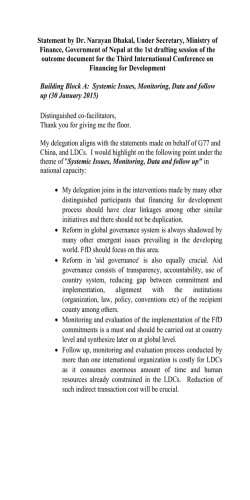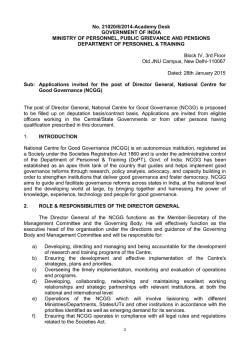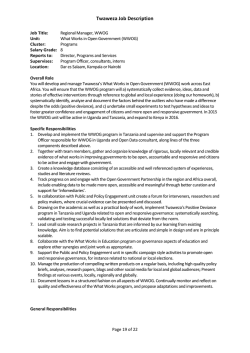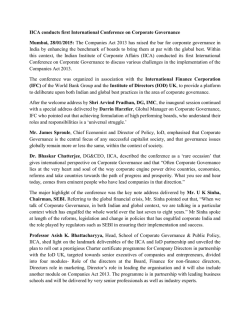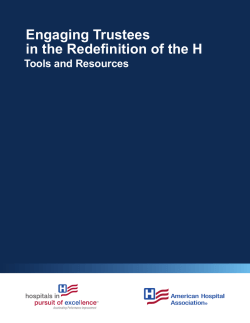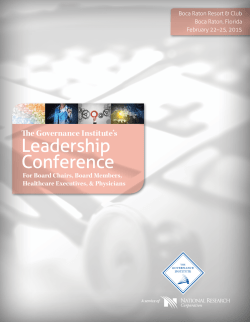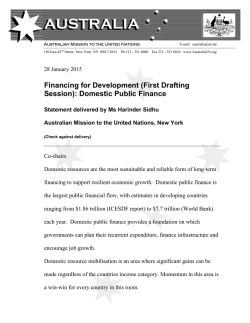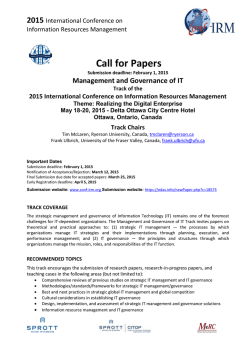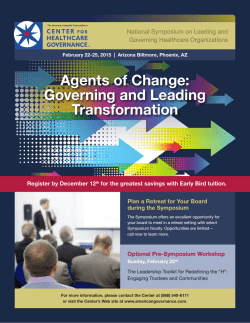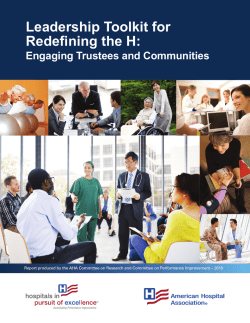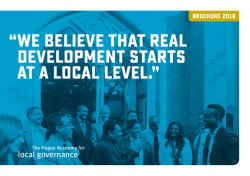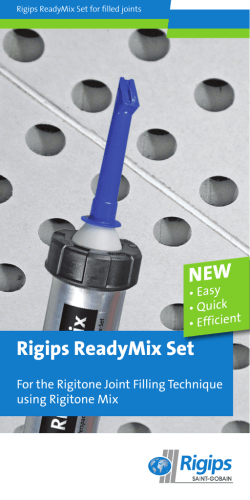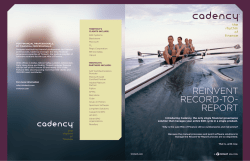
2015 G o vernance Forum A genda
2015 Governance Forum Agenda A valuable experience for both existing and emerging leaders in any organization. Boards, executives and medical staff teams should be encouraged to attend. Friday & Saturday, May 1st & 2nd Consequential Governance: How boards are becoming more intentional about their governance. Friday, May 1, 2015 Governance Fundamentals Workshop: For new board members or those considering joining a board Stonewall Resort & Conference Center wvgovernanceforum.org honest communication. Participants will discuss principles for a successful partnership, the differences between governing and managing and how to approach succession planning, performance review and compensation for the chief executive officer. 12:30 PM - 12:45 PM Welcome and Introductions Objectives for Session: By the end of this session, participants will: 12:45 PM - 1:30 PM Framework for Intentional Governance Sharon Lansdale, Pres/CEO Center for Rural Health Development 1. State reasons why some boards manage more than they govern; The difference between many health care organizations is vested in the way the board approaches its work. In low performing organizations, the board tends to be reactionary. These boards are informed about a problem or issue and go about developing solutions on the spot. The solutions tend to be knee-jerk solutions that may have unintended consequences. In high performing organizations, governance is more intentional – an issue arises, it is referred to the most appropriate committee and recommendations are developed. Data replaces emotion. Process trumps intuition. The process may be cumbersome, but it almost always leads to the best solutions. In this session, participants will begin to explore best practices for intentional governance by first developing a working understanding of the fiduciary duties of individual board members. These are the legal responsibilities of individuals who serve on boards. Participants will also discuss the three modes of board work necessary for meaningful board leadership. Objectives for Session: By the end of this session, participants will: 1. Describe the concept of Intentional Governance 2. State the three fiduciary duties of individual board members and how board members effectively carry out these duties 3. Describe how boards govern in the three modes effective governance 1:30 PM - 2:15 PM Board/CEO Relationship Roger Hanshaw, Attorney, Bowles Rice Misunderstandings often stem from the fine line between management and governance. While board work generally falls into the category of governance and the work of the chief executive falls generally into the category of management, there are some areas and responsibilities that may blur these lines. Indeed, we would argue that there are times when the two parties should be working in cooperative partnership on a number of important occasions. The board and chief executive’s level of involvement in management versus governance can change depending on the life cycle and current state of a nonprofit organization. High impact boards govern in a constructive partnership with the chief executive, recognizing that the effectiveness of the board and the chief executive are interdependent. They build this partnership through mutual trust, candor, respect and 1 of 3 2015 2. Describe strategies for effective governance; and 3. Review best practices for developing and implementing processes for CEO Succession Planning, Performance Review and Compensation 2:15 PM - 2:30 PM Break 2:30 PM - 3:15 PM Effective Governance Structures Roger Hanshaw, Attorney, Bowles Rice Individuals join boards to make a difference. Thus, how a board organizes itself will have a large impact on the effectiveness of governance for an organization. During this session, participants will discuss how boards organize to effectively govern their organizations. Issues such as board size, terms, committee structures, effective meetings and the role of the Governance Committee will be reviewed. Objectives for Session: By the end of this session, participants will: 1. Identify best practices for board structure; 2. State effective committee structures and effective meeting practices; and 3. Describe the role of the Governance Committee 3:15 PM - 4:00 PM Planning for Future Board Leadership Sharon Lansdale, Pres/CEO Center for Rural Health Development For many boards, recruitment is a once-a-year nominations process in which the nominations committee scrambles to find candidates to fill open positions, often resulting in less-than-ideal replacements in the interest of time. The job of building the board is more than just filling slots. During this session, participants will discuss the importance of being strategic in the way a board looks at its composition and how it develops board members over time. Objectives for Session: By the end of this session, participants will: 1. Explore steps for boards to follow through the board development process; 2. Understand the roles and responsibilities of a governance committee; and 3. Identify the year long processes needed for effective board member recruitment and development. 4:00 PM Wrap up and Evaluations A PROGRAM OF A valuable experience for both existing and emerging leaders in any organization. Boards, executives and medical staff teams should be encouraged to attend. 2015 Friday & Saturday, May 1st & 2nd Stonewall Resort & Conference Center wvgovernanceforum.org Friday, May 1, 2015 Advanced Governance Workshop: Strategies for Highly Effective Boards 5:00 PM - 7:30 PM Opening Reception and Dinner 5:00 PM - 6:00 PM 6:00 PM - 7:30 PM 6:30 PM - 7:30 PM Reception Dinner Dinner Keynote: Public Health and Healthcare Collaboration Ron Bialek, President, Public Health Foundation Grounded in the belief that public health and health care are more effective when their efforts are aligned than when they work separately; a population health driver diagram framework can be used to tackle challenges at the crossroads of these two sectors. Developed by the Public Health Foundation, with support provided by the CDC, the population health driver diagram is being used to help focus and align a community’s efforts to make progress on a defined community health challenge. Population health driver diagrams serve as a starting point and framework for discussion, and offer flexibility for identifying and addressing unique community characteristics and needs. They also help to create an atmosphere of collaboration and cooperation by enabling each participant in these discussions to identify roles already being played by their organization and others in the community, and determine additional action that can be taken individually and collectively to positively impact the particular community health challenge. Through participation in this session, participants will be able to: 1. Describe a framework being used to build collaborative healthcare and public health partnerships to impact health issues at the community level; 2. Using antibiotic stewardship as an example, describe how healthcare and public health can address population health issues in partnership; and 3. Learn how to use two quality improvement tools – Force Field Diagram and Population Health Driver Diagram – to facilitate and build collaborative partnerships. Saturday, May 2, 2015 8:00 AM - 8:15 AM Opening Remarks and Introductions 8:15 AM - 8:30 AM One Family/Patient’s Experience Andy and Jay Wessels 8:30 PM -10:30 AM Patient Experiences: From the Board Room to the Exam Room (or Bedside) Jake Poore, Founder and President, Integrated Loyalty Systems, Inc. Providing exceptional clinical experiences is not enough in today’s increasingly demanding, value-driven health care environment: you have to provide clinical expertise with compassion, and you 2 of 3 have to do both consistently. Delivering great patient experiences have to be more than something you do ... more than this year’s project or initiative: it has to be a compelling declaration of who you are as an organization. Being truly patient driven by actively engaging patients (and their families) in their care requires a clear line of sight from the board room to the exam room, with providers and staff at every level understanding “this is the way we do things here.” Jake Poore will share how health care organizations can successfully “hardwire” great patient experiences by starting with clear messages in the board room, “localizing” those messages down through the organization, and ensuring accountability all the way back up to the board room once again. Through participation in this session, participants will be able to: 1. Describe where loyalty comes from; to be certain everyone understands how organizational DNA must be balanced between the clinical and human levels. 2. Describe how to ensure a clear line of sight from the board room to the exam room (or bedside) by operationalizing the organization’s vision and instituting a set of board-approved operational priorities. 3. Review how families, referring physicians, even other staff members are critical “customers” who deserve exceptional experiences themselves, which results in increased engagement, retention and even improved clinical outcomes. 4. Discuss how ensuring accountability at every level is essential to achieve continuous improvement in delivering exceptional patient experiences. 10:30 AM -11:00 AM Break and Time to check out 11:00 AM - 12:30 PM What keeps a health care lawyer up at night? Amy King Condaras, Spilman Thomas & Battle Jim Thomas, Jackson Kelly John Moore, Bowles Rice Bob Coffield, Flaherty Sensabaugh Bonasso The look of health care today will be different from tomorrow. So what are health lawyers in West Virginia, most concerned with? From the ACA and HIPAA privacy and security issues – to Credentialing/ Peer Review - - to Human Resource issues and other concerns, this session features some of our state’s brightest health care lawyers discussing the health care legal issues that keep them up at night. Through participation in this session, participants will be able to: 1. Provide an overview of laws that regulate the health care industry; 2. Identify personal and organizational practices that can be used to avoid or limit liability; 3. Pitfalls in healthcare financing for nonprofit organizations; and 4. Discuss emerging trends in health care delivery and payment A PROGRAM OF A valuable experience for both existing and emerging leaders in any organization. Boards, executives and medical staff teams should be encouraged to attend. 2015 Friday & Saturday, May 1st & 2nd Stonewall Resort & Conference Center wvgovernanceforum.org Saturday, May 2, 2015 - Continued 12:30 PM - 1:15 PM Lunch in Stillwaters 1:15 PM - 2:30 PM Assess to Improve: Moving Your Board Forward through Self-Assessment Sharon Lansdale, President/CEO Center for Rural Health Development, Inc. In today’s health care environment, it is imperative to strive for healthy board governance practices and board self-assessment can drive that process. To achieve your vision of moving from a “functional” board to an "exceptional" board, board members must commit to making the changes required to become exceptional, which includes creating tangible goals for engagement, accountability, board recruitment, and governance practices, and assessing its performance against these goals. Through participation in this session, participants will be able to: 1. Understand governance roles and responsibilities of boards; 2. Explore tools and strategies to tap into the talents of board members and deepen their engagement; and 3. Review the self-assessment process that results in a governance improvement plan. 3 of 3 2:30 PM - 3:30 PM Creating Goodwill, Confidence and Trust in Your Community Andy Wessels, CEO Sterling Communications of WV As the cornerstone of health care in your community, now more than ever participation and community involvement are critical to your health care organization’s success. Although every health care organization needs a marketing and public relations strategy, there is no better PR program than community involvement. Andy will lead participants through the steps of beginning interaction with your community that will lead to increased confidence and trust with your community. Through participation in this session, participants will be able to: 1. Describe the steps to building confidence in your community; and 2. Discuss the different types of events health care organizations are using to be more involved in their communities. 3:45 PM Wrap Up and Evaluations A PROGRAM OF
© Copyright 2025
